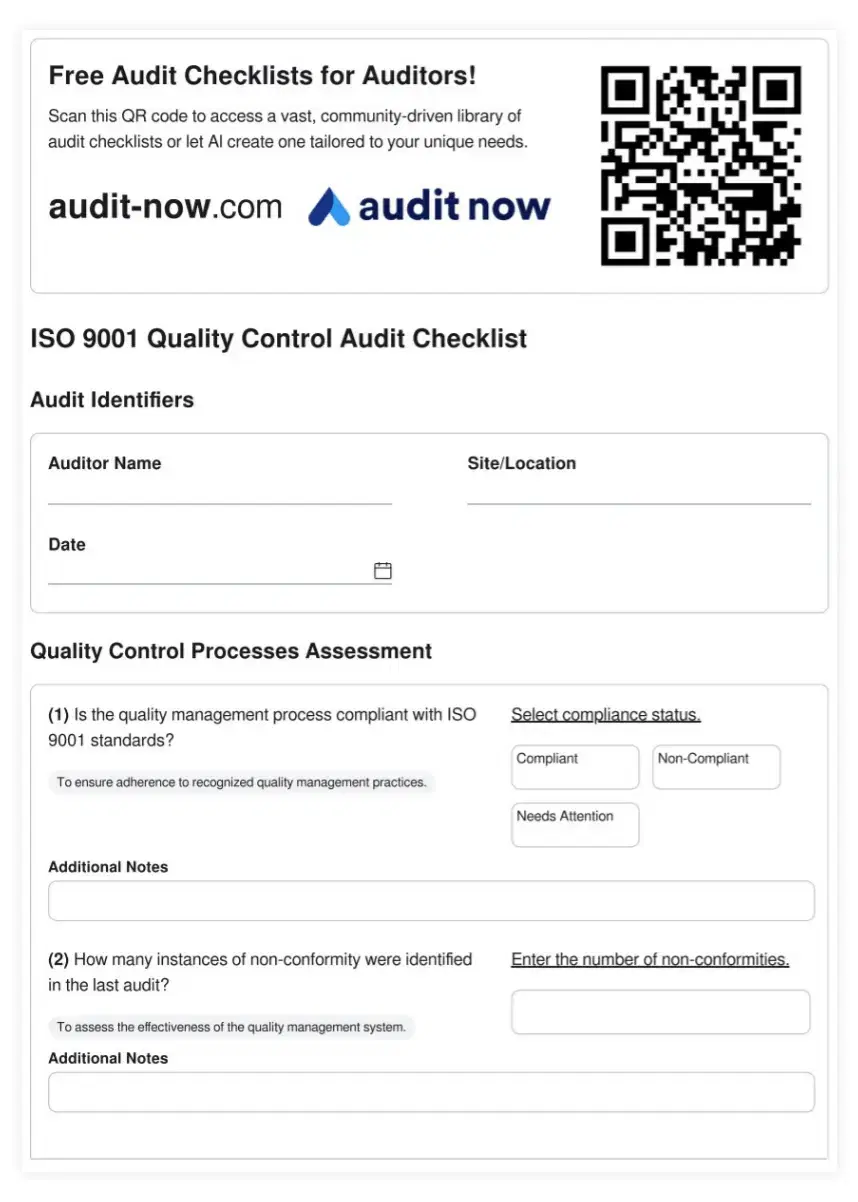Running a restaurant means juggling safety, customer experience, and kitchen hygiene all at once. Restaurant audits bring structure to these tasks, helping managers reduce risks, improve consistency, and stay inspection-ready.
20 Aug 2025
•
Beril Işık

Featured Checklist

Restaurant Front-of-House Operations Audit Checklist
The front-of-house operations are crucial to a restaurant's success, directly impacting customer experience and satisfaction. This comprehensive Restaurant Front-of-House Operations Audit Checklist is designed to help restaurant managers, owners, and quality assurance teams evaluate and improve the efficiency, professionalism, and overall performance of the dining area and customer service. By addressing key aspects such as staff appearance, table settings, cleanliness, service standards, and customer interaction, this checklist ensures that your restaurant delivers exceptional dining experiences consistently, enhancing customer loyalty and boosting your reputation in the competitive hospitality industry.
Running a restaurant means balancing many moving parts. Restaurant Managers must ensure every detail is checked daily. Because both the dining room experience and back-of-house hygiene are important. Restaurant audits help create structure around these tasks and reduce the risk of costly mistakes.
Traditionally, many managers relied on spreadsheet checklists. But simple and familiar spreadsheets often fall short in today’s fast-paced food industry.
Restaurant audit software solutions, supported by ready-made checklists like those from Audit Now, stands out as a more reliable and scalable option.
Audits are not just paperwork. They are a safety net of the restaurant. Audits protect both customers and business reputation. They help to prevent foodborne illnesses, maintaining service quality, or complying with regulations
Neglecting any of these pillars can create serious risks, from legal fines to customer complaints.
For decades, spreadsheets have been the go-to method for tracking audits. They are flexible and cost-effective, but they rely heavily on manual input.
Example: A manager using a spreadsheet for the Restaurant Safety Audit Checklist may forget to update inspection dates for fire extinguishers. This gap might only be noticed during an official inspection, leading to penalties.
Digital audit software offers a smarter alternative. Instead of depending on manual entries, managers can rely on automated systems that track, remind, and report in real time.
Example: During a busy dinner shift, a manager may forget to check table cleanliness. With Audit Now’s Restaurant Front-of-House Operations Audit Checklist, staff receive reminders and log updates instantly. The dashboard tracks results, ensuring no detail slips through.
Kitchen hygiene is one of the most critical areas in any restaurant. Mistakes can lead to foodborne illnesses, loss of customers, or even closure.
Staff must manually log temperatures and cleaning tasks. If someone forgets, there’s no alert system. Issues may be noticed days later.
With Audit Now’s Restaurant Kitchen Hygiene and Food Safety Internal Audit Checklist, every step is logged in real time. If something is missed, the system alerts the manager immediately. This ensures food safety standards are met consistently, even during peak hours.
By using the Restaurant Safety Audit Checklist, Front-of-House Checklist, managers cover all areas without gaps.
Switching from spreadsheets may feel challenging at first, but the process is straightforward with the right steps.
Look at existing spreadsheets. Are tasks often forgotten? Are reports hard to pull together?
Use ready-made templates like Audit Now’s Restaurant Safety Audit Checklist to save time.
Introduce one checklist at a time. For example, start with the Front-of-House Operations Audit Checklist, then add kitchen and safety audits.
Review reports weekly to see how the system improves performance and address any staff challenges early.
No matter the tool you use, the key is consistency.
Take a look at Audit Now's templates!
Try Here
Audit Now provides an easy transition from manual spreadsheets to digital audits.
With Audit Now, managers gain more control, fewer errors, and stronger compliance without the stress of manual tracking.
Spreadsheets may still work for small operations, but they lack the structure and scalability that modern restaurants require. Restaurant audit software offers automation, real-time tracking, and peace of mind.
By evenly using the right restaurant audit software, managers can ensure every part of their restaurant is running smoothly.
For restaurants aiming to grow, protect their reputation, and stay inspection-ready, software is the clear choice.
Audit Best Practices: Learn More
What Does a Restaurant Manager Do? Key Responsibilities and Best Practices
The Complete Guide to Restaurant Inventory Management in 2025